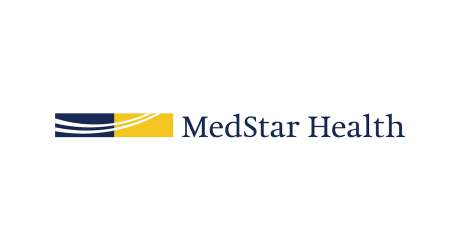MedStar- “TeleStoke- MI2” Best Practices
Improving the Patient Experience
MedStar- “TeleStoke- MI2” Best Practices
MedStar- “TeleStoke- MI2” Best Practices
MedStar Health is a not-for-profit 10 hospital integrated healthcare system serving the Baltimore/Washington region that has created the MedStar Institute for Innovation (MI2) - TeleStroke Program.
The purpose of the MI2 is to catalyze the innovation of the health system to find opportunities to solve problems that we haven’t been able to respond to. The TeleStroke program is
under the MI2 division and provides 24/7 on demand remote service by the neurosciences line for three emergency departments in MedStar. This helps address the increasing demand for clinical neurology services without requiring a doctor to be there in person.
We can now provide on demand access to an acute stroke neurologists who can be wheeled on a monitor to the bed side of the patient. This access would allow transferring hospitals to be able to
keep the patient locally. Time for treatment would be improved especially if someone needs urgent drug administered. Another benefit to the patient nin terms of quality of life is not having to be
transferred to another hospital. A benefit to our hospital is better management of volume and the avoidance of unnecessary patient transfers.
Using Health technology is a means to bring “systemness” to a health system. Now that we have shown that we can pull of tele-consults with stroke and neuro in an ED this paves the way for other
future uses of telemedicine within our system. Now the primary care doctors want to use technology to really start to distribute care where it’s needed and
when it’s needed most. TeleStroke initially started as a way to provide services to external hospitals in need but then it got folded into a broader effort around “systemness”
for our health system. In the middle of the night we want to get eyes on a stroke patient at their bedside. Once we started doing this we realized all the other moving parts of this would also need to be evolved. So now our ability to do remote access to CTs has been improved, our ability to onboard and credential providers across sites had to be rethought and advanced,
Best Practices
- Providing remote care - We shifted contracts of on-call physicians who normally would provide on-site services to now include remote patient care and monitoring. We uncovered that some of the downstream benefits from doing this would be better coordination amongst our sites and services and the reduction of unnecessary transfers.
- Commited time and patience - The programs that are still running are doing so because there are one or two individuals who are still committed and were willing to deal with all of the ugliness and not give up. Having flexible tools and solutions that you can be molded over time is also critical. The ability to automate processes with people instead of systems; we could wait for the perfect system to be built or we can have people do the heavy lifting in the meantime, it’s not the most ideal way to do it but it certainly gets the work done.
- Liscensing - We need to triple license a lot of our providers if they are going to be on any digital platform so that we are covered for DC/MD/VA.
- Getting the message across - Getting physician buy-in is a challenge as we are in this middle space where we don’t have a full virtual practice, how to get the early adaptors to infuse their enthusiasm across the system. Messaging and storytelling is such a huge part in getting buy-in.
- Supporting the system - Internally getting people to realize that it’s not just about the technology. The program also requires a change in staffing models and compensation, as well as integrating virtual scheduling and improved documentation. Clinical workflow around technology management in the ED and devices that get assigned for providers to use for video consultshad to be planned out. The ways our multiple sites connect through our transport service had to be redesigned.


